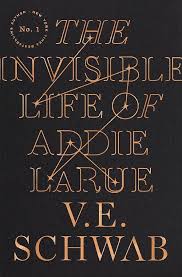Chapter XIX
byChapter XIX begins in the dimming light of March 18, 2014, as Henry and Addie wrap up their day at an art exhibit in New York City. The final stop in their exploration leads them into an extraordinary space defined by transparent plexiglass walls, a unique exhibit that feels more like an artistic experience than just an art gallery. The space, almost like a library’s book stacks but without any books, brings them to a central concept encapsulated by the overhead sign: “YOU ARE THE ART.” The atmosphere is electric, filled with vibrant neon colors, while the walls bear the marks and drawings left by previous visitors—visible remnants of countless others’ attempts to make a statement. Addie, eager to participate and leave her own mark on the walls, tries to draw her thoughts and feelings, but each of her attempts is swiftly erased, disappearing as quickly as it’s made. This vanishing act strikes her deeply, reflecting the continuous cycle of her life where everything she tries to leave behind—whether a memory, a connection, or even a mark—tends to fade. Her growing frustration is clear as she watches the marks she’s made disappear, yet this fleeting experience sparks something in her. In response, Henry, who is witnessing her struggle, offers his help. Together, they find that their combined efforts allow them to create something permanent, breaking the cycle of impermanence that has defined Addie’s existence for so long.
This realization of being able to make an impact that lasts marks a profound breakthrough for Addie. For the first time in her long life, she sees the potential to leave something behind that doesn’t fade away with time. Through Henry’s support, she’s able to pour out her emotions and create images that reflect her joys, sorrows, and her essence. Each brushstroke and mark is a manifestation of her internal world—a world that’s often invisible to those around her. The most powerful of these marks is her name, “Addie LaRue,” written on the wall with hesitant hope. Unlike her previous attempts, where her presence seemed to dissolve into nothing, this name stays intact, offering Addie a tangible sense of permanence. It is an affirmation that, even in her otherwise transient existence, there can be moments of lasting significance. This simple yet profound act of writing her name ignites a feeling she has not known in years: hope. The possibility of permanence, even if only through Henry’s actions, gives Addie a new sense of agency—something that’s been absent from her life for centuries.
The shift within Addie is immediate and powerful. She feels an overwhelming surge of hope, something that has long been absent in her eternally shifting world. It drives her to take immediate action, propelling Henry out of the exhibit and into the bustling streets of New York City, back toward their shared home in Brooklyn. The urgency of their steps reflects a newfound sense of connection, as if the marks they made on the wall in the exhibit are now mirrored in the world they are walking through. Addie’s hand, now stained with green paint from the exhibit, interlocks with Henry’s, marking a physical and emotional bond between them. Their relationship, once defined by curiosity and mystery, now feels more tangible, symbolized by the green paint that lingers on their fingers as a sign of their shared experience. As they return to their apartment, the energy between them is palpable, charged with the unspoken understanding that something fundamental has shifted in their dynamic. Addie, feeling empowered by this change, reaches for a notebook and pen from Henry’s collection. She urges him to write her name once again—this time on paper, where it won’t disappear with the stroke of time. Seeing her name written and knowing it will remain gives her a sense of accomplishment she has never felt before. The permanence of her name on paper, a simple act but a deeply significant one, marks a turning point in Addie’s journey. For the first time in centuries, she finds a way to leave a mark, not just in a temporary art exhibit, but in the very fabric of her own existence. As she looks at the words in front of her, the phrase “This is how it starts” rings in her mind, signaling the beginning of a new chapter in her life. This moment, marked by the ability to leave a permanent mark, is more than just a small victory for Addie; it represents the birth of a new hope, a fresh start, and the possibility that, through her connection with Henry, she can carve out something lasting in her otherwise ephemeral life.


